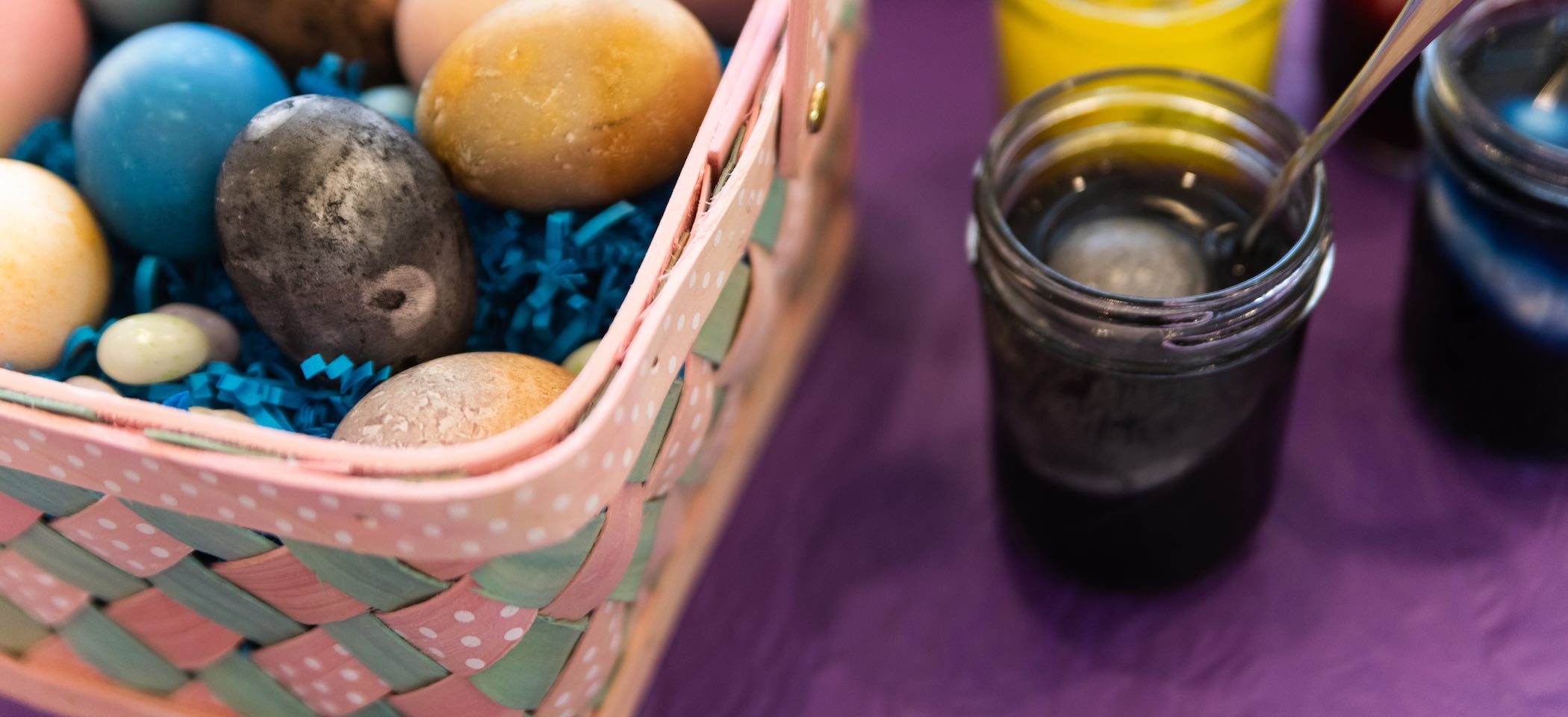
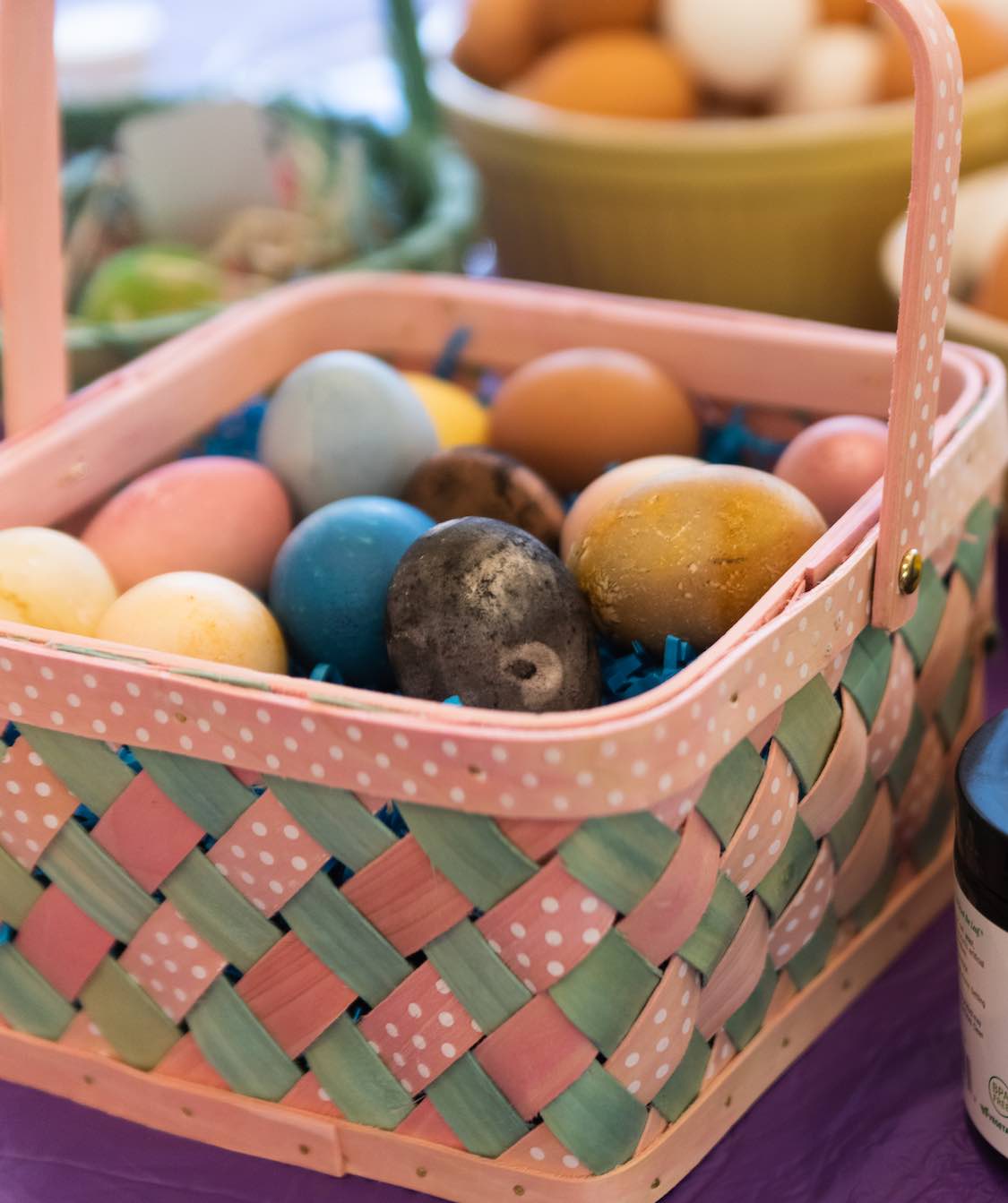
Use ingredients in your kitchen to decorate your eggs — like turmeric for a golden yellow or beets for a dark pink!
Ingredients and Directions
Directions
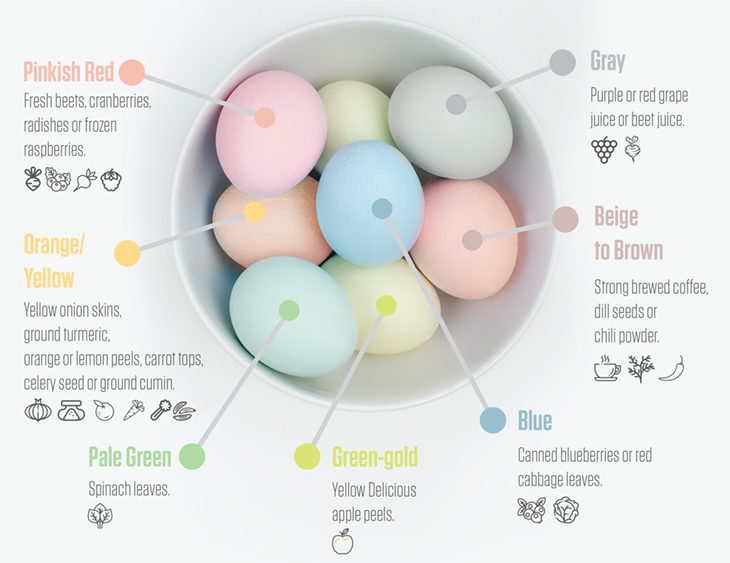
To make naturally dyed eggs, TOSS your choice of a handful – or two or three – of one of the ingredients listed into a saucepan. Use your own judgment about quantity. This is an art – not a science!
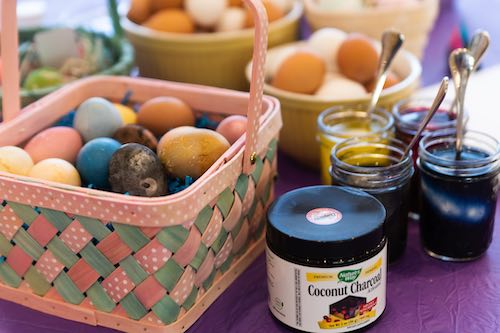
ADD about a cup of water for each handful of your chosen ingredient, so the water comes at least an inch above your dye materials. BRING mixture to boiling, reduce the heat and SIMMER from 15 minutes up to an hour, until the color is the shade you want. Keep in mind that the eggs will dye a lighter shade. REMOVE the pan from the heat.
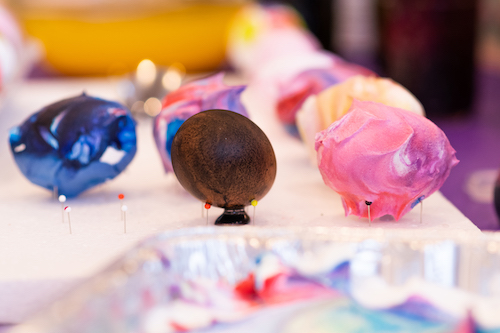
Through cheesecloth or a fine sieve, STRAINthe dye mixture into a small bowl that’s deep enough to completely cover the eggs you want to dye. ADD 2 to 3 teaspoons of white vinegar for each cup of dye liquid.
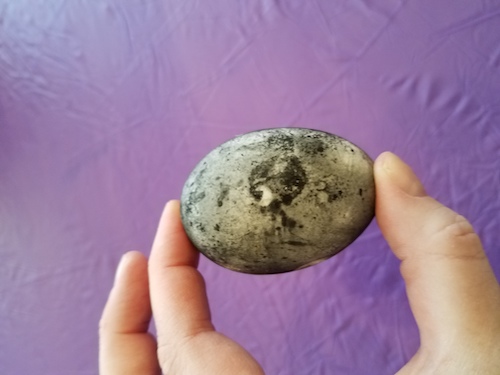
With a spoon or wire egg holder, LOWER the eggs into the hot liquid. Let the eggs stand until they reach the desired color. For emptied eggshells, stir or rotate for even coloring. With a slotted spoon or wire egg holder, REMOVE the eggs to a rack or drainer. Allow the eggs to dry thoroughly. Refrigerate hard-boiled eggs that you intend to eat within two hours, and always follow tips for egg safety. Naturally Dyed Eggs require longer soak time in the dye solution for the color to take hold (overnight will give the best, most saturated color).
To ensure food safety, eggs should be cooked until both the yolk and the white are firm. Consuming raw or undercooked eggs may increase your risk of foodborne illness, especially for those with certain medical conditions. For recipes that call for eggs that are raw or undercooked when the dish is served, use either pasteurized shell eggs that have been treated to destroy Salmonella, or use pasteurized egg products.
